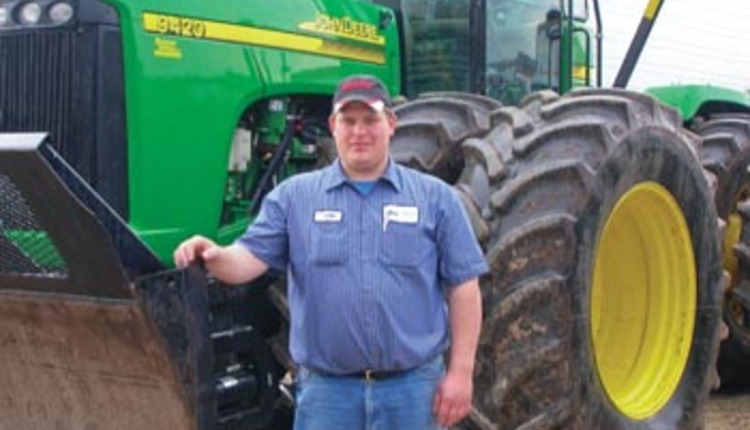The author is an agricultural free-lance writer based in Manitowoc County, Wisconsin.

Badger Pride team of Lorin and Linda Berge, left, farm with their son, Matthew,
his wife, Jennifer, and their children, Otis and Caroline (not shown).
A five-pen approach reduces social stress. Drover's lane, sand bedding, large stalls, and adequate bunk space all add to the mix.
The latest research on fresh cow management helped write the blueprints for Lorin and Matthew Berge's new transition barn. The Berges are a father-son team who own and operate Badger Pride Dairy, a 700-cow dairy in Manitowoc County, Wis. The 120-cow, tie stall dairy began expanding in 2001, shortly after Matthew graduated from college. The partners bolstered quality and size, adding a double-8 parallel parlor with a rapid exit system and indexer, a complimentary set of sand-bedded free stall barns, and top-of-the-line calf management.
However, dry cows were kept in what Matthew describes as a hodgepodge of housing with a serious lack of bunk space. He and his father began analyzing the freshest research on transitioning cows and brought in experts, including Doug Braun, D.V.M., Pfizer Animal Health, and Kenneth Nordlund, D.V.M., University of Wisconsin-Madison, to brainstorm and crunch the numbers.
The Berge's plans called for an airy, multipenned barn that features generously sized free stalls, sand bedding, ample bunk space, calving pens, and, most importantly, eliminates pen moves to reduce social stress.
Since the first cow moved into the transition barn near Thanksgiving 2008, the facility has performed as well, or even better, than the Berges expected. The Berge's rolling herd average is over 28,000 pounds, hitting 91 pounds per cow the third week of April. "We have seen some production increase on herd average which, now that the entire herd has gone through it at least once, I would be willing to say is at least three or four pounds per cow per day," Matthew said, attributing a generous portion of the increase to the substantial improvement in dry cow housing quality.
Read the complete article in the August 25, 2010 issue of Hoard's Dairyman, on page 552

his wife, Jennifer, and their children, Otis and Caroline (not shown).
A five-pen approach reduces social stress. Drover's lane, sand bedding, large stalls, and adequate bunk space all add to the mix.
The latest research on fresh cow management helped write the blueprints for Lorin and Matthew Berge's new transition barn. The Berges are a father-son team who own and operate Badger Pride Dairy, a 700-cow dairy in Manitowoc County, Wis. The 120-cow, tie stall dairy began expanding in 2001, shortly after Matthew graduated from college. The partners bolstered quality and size, adding a double-8 parallel parlor with a rapid exit system and indexer, a complimentary set of sand-bedded free stall barns, and top-of-the-line calf management.
However, dry cows were kept in what Matthew describes as a hodgepodge of housing with a serious lack of bunk space. He and his father began analyzing the freshest research on transitioning cows and brought in experts, including Doug Braun, D.V.M., Pfizer Animal Health, and Kenneth Nordlund, D.V.M., University of Wisconsin-Madison, to brainstorm and crunch the numbers.
The Berge's plans called for an airy, multipenned barn that features generously sized free stalls, sand bedding, ample bunk space, calving pens, and, most importantly, eliminates pen moves to reduce social stress.
Since the first cow moved into the transition barn near Thanksgiving 2008, the facility has performed as well, or even better, than the Berges expected. The Berge's rolling herd average is over 28,000 pounds, hitting 91 pounds per cow the third week of April. "We have seen some production increase on herd average which, now that the entire herd has gone through it at least once, I would be willing to say is at least three or four pounds per cow per day," Matthew said, attributing a generous portion of the increase to the substantial improvement in dry cow housing quality.
Read the complete article in the August 25, 2010 issue of Hoard's Dairyman, on page 552








